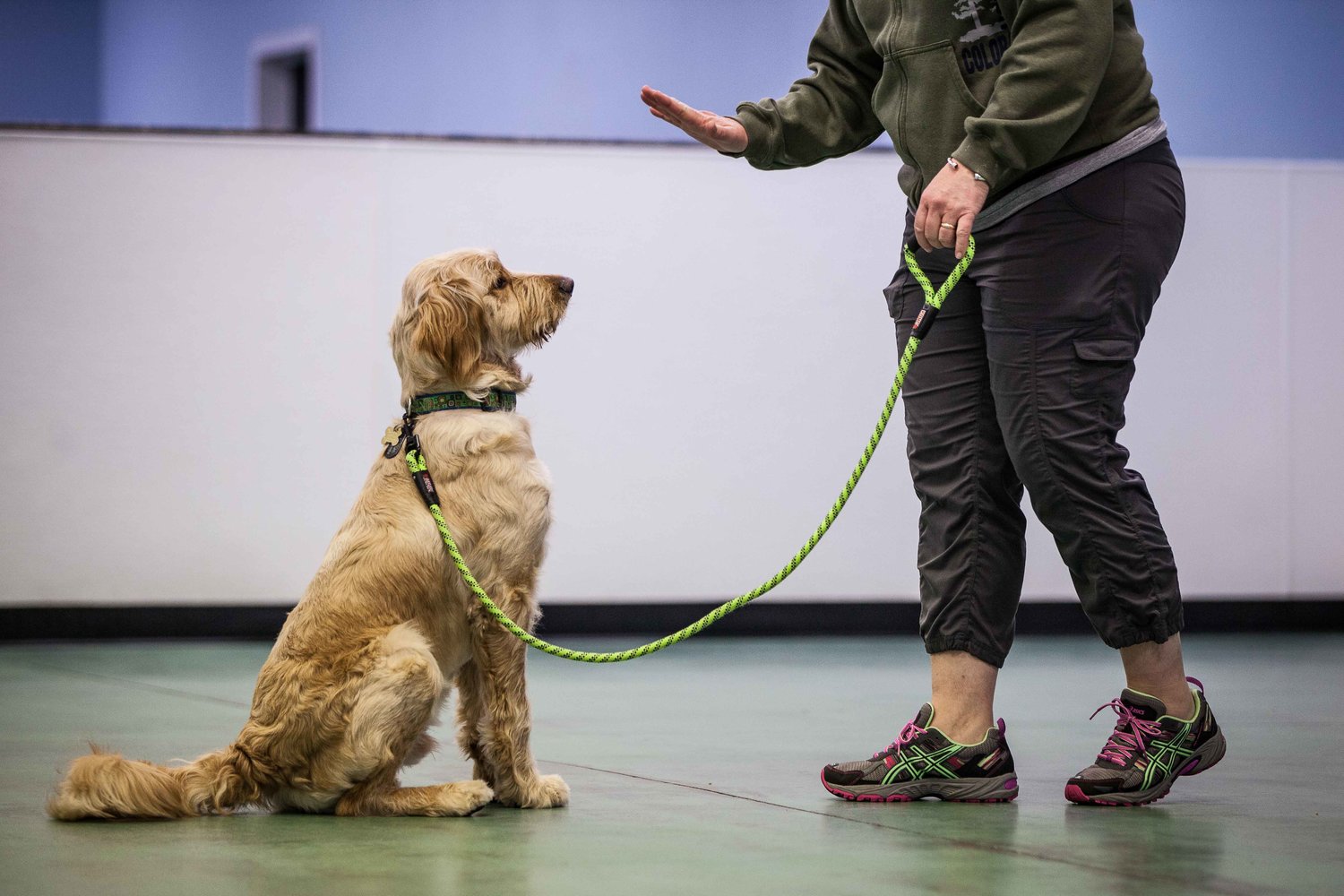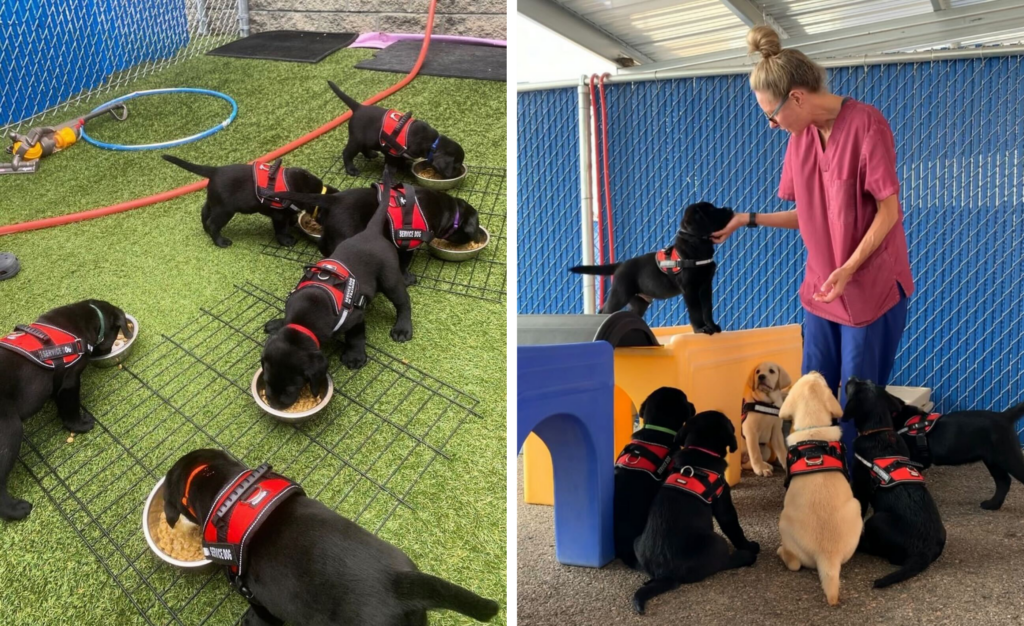Quality Puppy Training for a Happy, Obedient Dog with Professional Help
Transform Your Canine's Actions With Proven Training Methods
Transforming your pet dog's actions calls for a nuanced understanding of their private attributes and demands, as well as the application of proven training methods. By utilizing favorable support and identifying important hints in their body movement, you can effectively attend to typical behavior problems such as extreme barking or leaping. Consistency in your training strategy not only improves obedience but additionally fosters a much deeper bond of trust fund and regard in between you and your pet dog. The course to effective makeover might provide unanticipated difficulties that warrant further exploration.

Recognizing Pet Behavior
Recognizing dog behavior is crucial for effective training and interaction in between humans and their canine friends. Pet dogs, as social animals, display a series of habits affected by genetics, environment, and experiences. Acknowledging these actions helps owners customize their training approaches to satisfy the details needs of their canines.
Secret aspects of dog actions consist of body language, articulations, and social communications. In addition, socialization plays an important function in forming habits; pet dogs that connect positively with numerous individuals and various other animals are usually much more versatile and well-adjusted.
In addition, recognizing stress and anxiety signals-- such as avoidance, panting, or pacing habits-- can avoid rise right into more major problems. Proprietors who are in harmony with their canine's behavior can create a caring and risk-free setting, promoting depend on and improving the training process. Ultimately, a deep understanding of canine behavior lays the foundation for an unified partnership and effective training outcomes, ensuring both dogs and their proprietors grow with each other.
Positive Support Methods
Favorable reinforcement methods are commonly identified as one of the most reliable methods for training dogs, cultivating a positive knowing environment. This strategy entails gratifying desired behaviors with treats, praise, or play, consequently urging the pet dog to repeat those behaviors (Dog training). Unlike corrective techniques, positive support builds depend on and reinforces the bond in between the pet dog and the fitness instructor
Rewards ought to be provided instantly following the preferred habits to aid the pet dog make the link. Consistency is also vital; utilizing the exact same commands and benefits assists the pet dog comprehend what is expected.
It is essential to note that favorable support is not concerning bribery; instead, it is regarding strengthening good behavior. In time, as the pet discovers to connect specific activities with favorable outcomes, the regularity of incentives can be progressively reduced, transitioning to verbal appreciation or recurring benefits. This method not just motivates obedience but additionally advertises a delighted and positive canine, making training a more pleasurable experience for both parties entailed.
Resolving Typical Issues
Resolving typical issues throughout pet dog training is important for ensuring a effective and harmonious relationship between the pet and its owner. Several pet dog owners encounter behavioral obstacles, such as excessive barking, leaping, and leash drawing. Understanding the origin causes of these habits is essential for reliable training.
Excessive barking might stem from monotony, anxiety, or a lack of socializing. To mitigate this, supply ample exercise, psychological stimulation, and chances for social communication with both humans and various other dogs. Jumping can usually suggest enjoyment or a need for interest. Educating the dog to sit upon greeting can reroute this actions positively.
Chain drawing is one more prevalent problem, often arising from a pet's enthusiasm to discover. Using appropriate leash handling techniques, incorporated with training browse around this web-site protocols that motivate loose-leash strolling, can significantly improve this actions.
On top of that, problems like resource protecting or separation anxiety call for customized techniques. Progressive desensitization and counter-conditioning can be efficient in attending to these challenges. By recognizing and proactively taking care of these usual concerns, canine proprietors can promote a more pleasurable training experience and enhance the bond with their canine friends.
Consistency in Training
Consistency is a keystone of reliable pet training, as it develops a clear structure for the pet dog to comprehend behaviors and assumptions. When commands, rewards, and signs are used consistently, dogs can extra easily grasp what is called for of them. Inconsistent training can cause confusion, leading to undesirable behaviors that discourage both the trainer and the pet.
To achieve uniformity, it is important that all participants of the household abide by the very same training techniques. For example, using the very same verbal hints and hand signals ensures that the pet dog obtains uniform messages. Furthermore, the timing of incentives and modifications ought you could look here to correspond; immediate support increases the chance that the dog will connect the behavior with the result.
Normal method sessions, combined with structured routines for feeding, walking, and play, aid pet dogs anticipate and understand their environment, making them extra responsive to training. Eventually, consistency fosters a sense of safety and depend on, encouraging pet dogs to discover more efficiently.
Building a Solid Bond
Just how can promoting a strong bond in between a pet dog and its proprietor boost the training experience? A solid relationship constructed on depend on and respect acts as the foundation for efficient training. When a pet feels secure in its link with its owner, it is more probable to show favorable behaviors and be responsive to learning. This bond urges the pet dog to involve totally in training sessions, as it views the proprietor as a resource of support and support.

In addition, a reputable link can decrease stress and anxiety and behavioral problems, as canines are less most likely to act out when they really feel recognized and looked after. Therefore, focusing on the growth of a solid bond not only enhances the training experience but also contributes to a better and extra well-adjusted pet. Ultimately, the trip of training transforms into a collaborative collaboration, bring about lasting behavior renovations.
Verdict

Proprietors that are attuned to their canine's habits can create a nurturing and risk-free setting, cultivating count on and improving the training procedure. Inevitably, a deep understanding of canine behavior lays the foundation for a harmonious connection and efficient training end results, guaranteeing both canines and their visit this website owners grow together.
Addressing common issues during canine training is important for ensuring a successful and unified partnership in between the pet and its proprietor (Dog training).Uniformity is a cornerstone of efficient pet dog training, as it establishes a clear framework for the canine to understand behaviors and expectations.In conclusion, changing a pet's actions via verified training techniques needs an understanding of canine behavior, the application of positive reinforcement techniques, and a focus on uniformity